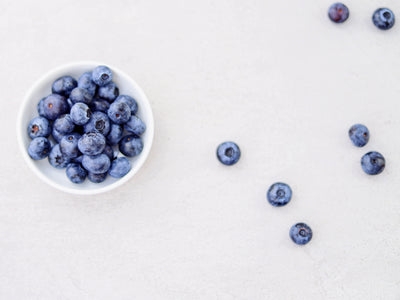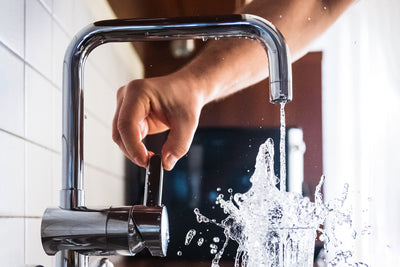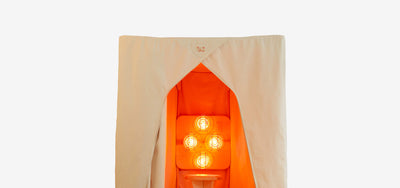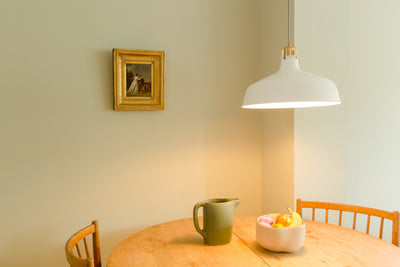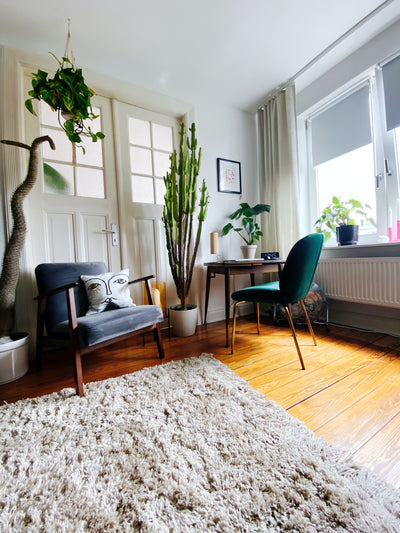3 Ways to Harness the Healing Power of Heat and Light

With dwindling daylight hours, plummeting temperatures and minimal motivation to get outside and move your bones, the changes winter brings can exacerbate low mood and take a toll on energy levels.
This winter in particular has left many people in hibernation mode, with long days working from home staring at a screen, lack of social contact, comfort eating and sedentary nights on the sofa making fatigue and feelings of anxiety and depression harder to overcome.
So, in a season where natural sunshine and warmth are wanting, how can you use light and heat to boost your vitality? Read on to discover three ways to harness the healing power of these potent resources and feel good again.
1. Enjoy the benefits of regular sauna sessions

The sauna: a peaceful haven, where the deadlines of modern life drift away as you surrender to the heat.
But more than that, the sauna makes an ideal sanctuary from the weak light and frosty air of winter. Just look at Scandinavia, where long, dark, bitterly cold winters drive people to the sauna in their millions in their search for alternatives to the natural endorphins sun exposure produces.
“Denmark can be really miserable from November to April,” Copenhagen resident Mikkel Falk Møller told the BBC.[1] “There is hardly any daylight and we often have weeks without seeing the sun. A lot of people (myself included) suffer from mild winter depression.”
It’s the same story in Finland, where harsh winters mean the sauna is a national obsession. According to[2] the Finnish Sauna Society, there’s one sauna for every 1.8 people in the country.
Aside from providing a refuge from the cold and a sun-substitute, scientists at the University of East Finland found that[3] middle-aged men in Finland who took a sauna more than four times a week were 66% less likely to develop Alzheimer’s disease or dementia during the study period. The scientists came to their conclusions after following more than 2,000 Finnish men for 20 years.
Previous studies have shown that regular sauna use reduces the risk of dying from 'all causes' and also seems to improve heart health. Professor Jari Laukkaben, who led the University of East Finland research, said that sauna bathing may protect both the heart and the brain in similar ways. “It is known that cardiovascular health affects the brain as well,” he said. "The sense of wellbeing and relaxation experienced during sauna-bathing may also play a role."
But the potential benefits of sauna-bathing don’t stop there. Studies over the years have shown that regular sauna use could:
- Help alleviate symptoms of depression and improve mood[4]
- Cut pneumonia risk[5]
- Help ease the pain of chronic conditions like fibromyalgia[6]
- Reduce levels of toxic chemicals in the body[7]
- Help patients with Chronic Fatigue Syndrome (CFS)[8]
- Reduce pain caused by inflammatory diseases like rheumatoid arthritis[9]
- Be used as a post-exercise recovery tool[10]
- Have cardiovascular benefits[11]
- Reduce chronic tension headaches[12]
Saunas come in different types, from the traditional Finnish cabins to more modern infrared versions. Rather than heating the air around you like a traditional sauna, infrared saunas emit infrared light and heat that your body absorbs, warming you from the inside out.
At Conscious Spaces, we offer both near-infrared saunas and far infrared saunas. “I like how, with infrared saunas," says Tara, founder of Conscious Spaces, "you get the benefit of the light as well as the heat – which for me brings an added level of wellbeing.”
2. Try combining hot and cold therapies

So, we know that sweating it out in a sauna can bring health benefits. At the other end of the scale, we also know that cold therapies, such as cold-water swimming, can boost our wellbeing in many ways. But what happens when you combine the two? Once again, it’s something in which our Scandinavian friends are well-versed.
“Here,” states Visit Sweden,[13] “swimming isn’t merely a summertime activity, a cold bath (kallbad) is also a favourite outdoor pastime in autumn and winter. A hot sauna completes the therapeutic experience.”
Taking advantage of its coastline plus the many lakes and rivers found throughout, the country is dotted with beautiful ‘cold bathhouses’; year-round refuges of relaxation that combine wild, open-water and saunas. At Saltsjöbaden,[14] a historic seaside resort in the Swedish archipelago with a famous public open-air bath, dense snow doesn’t stop swimmers from stripping off, heating up in the sauna, and then jumping in the icy sea – before returning to the sauna to warm up and repeat the ritual all over again.
It’s a similar scenario in Denmark, where facilities like CopenHot – a collection of saunas, hot tubs, ice baths – sits on Copenhagen’s harbour front. “When you throw yourself into the cold water and then into a boiling sauna, it gives you energy and an enormous endorphin kick,” says[15] one regular.
Finns, too, love to switch from hot to cold, back to hot and then back to cold again in a cycle of abrupt temperature changes – taking advantage of the frigid, ice-coated lakes that often lie right next to their beloved saunas for that very reason.
The combination of cold and hot is not solely a Scandinavian pursuit, either. Back in the age of the Roman Empire, huge bathing complexes would typically house[16] superheated ‘sweating rooms’ known as Laconica and Sudatoria, a warm room or ‘Tepidarium’ and a ‘Frigidarium’ – an unheated cool room with a cold-water basin, which formed the heart of the baths. Many also included freezing cold-water plunge baths for added contrast.
Another practice which uses rapid temperature changes to bring greater wellbeing is contrast bath therapy,[17] also known as contrast hydrotherapy. Contrast bath therapy involves, as the name suggests, alternating hot and cold water treatment. By submerging part or all of the body in freezing water (such as an ice bath) and then immersing it in warm water, your blood vessels get smaller and then open up in a pulsing, pump-like action. Contrast bath therapy’s proponents – many of them athletes – believe this pumping motion can help reduce fatigue, relieve injuries, lessen swelling and get them back in the game faster.
Usually done with the supervision of a professional therapist, contrast bath therapy is tricky to do at home. But, with saunas a common feature of spas and gyms, the hot sauna / cold water combination is easy to recreate. Next time you have a sauna (as long as you have no underlying medical condition that may be exacerbated by doing so) see if there’s a cold plunge pool nearby, or failing that, a shower you can keep on its coldest setting, and try alternating between the two until you feel fully invigorated.
3. Incorporate red light therapy into your routine

We all know how good we feel after luxuriating in the sun’s warming rays. But with the balmy summer months a distant memory, how about if you could use therapeutic light forms – at specific wavelengths and intensities – to help heal a variety of health complaints, from muscle injuries to mental health, even in the depths of winter? It’s something that scientists have been investigating more thoroughly in recent years.
Daniel Johnstone, who studies the therapeutic uses of light for neurodegenerative diseases in his lab at the University of Sydney, told Goop[18] that “light serves a broadly protective role, meaning it should be effective against a range of conditions,” such as those linked with “oxidative stress, mitochondrial damage, and inflammation”.
Johnstone went on to say that you can “pretty much name a health condition and there will be some research on it with light therapy,” listing “psychiatric disorders such as anxiety and depression” as two conditions which “benefit from red light therapy” in particular.
So, what is red light therapy? Also known as photobiomodulation or low-level laser therapy (LLLT), it involves[19] exposing the body to red or near-infrared light to stimulate healing, reduce inflammation, increase mitochondrial function and improve blood flow and tissue oxygenation.
Unlike ultraviolet rays from the sun which can damage the DNA of our skin cells, light emitted in this spectrum is perfectly safe,[20] meaning you won’t burn and can’t tan through exposure to red light.
First used in experiments by NASA scientists[21] to encourage photosynthesis and growth in plants during space flights, researchers soon began to test whether red light therapy might have benefits for astronauts too. They found it did – by speeding up wound healing and tissue growth, both of which can be slowed in the low-gravity environment of a space shuttle.
Since those initial studies, red light therapy has been shown to have the potential to:
- Improve memory and mental agility in people with Alzheimer’s[22]
- Help the brain repair itself, particularly after traumatic brain injury and stroke[23]
- Help lessen the symptoms of Major Depressive Disorder (MDD)[24]
- Improve acne scarring[25]
- Help keep vision sharp into old age[26]
- Promote collagen production and reduce the appearance of wrinkles[27]
- Help treat hair loss[28]
- Ease muscle, joint and tendon pain[29]
- Reduce the painful side effects of chemotherapy and radiation treatments in cancer patients[30]
- Boost athletic performance[31]
- Improve athletic endurance[32]
- Make you less likely to catch a cold[33]
But how exactly does red light therapy deliver these benefits?
It’s thought that red light works its wonders by stimulating the mitochondria[34] in our cells. Mitochondria help turn food and oxygen into energy that the cell can use, earning them their renowned powerhouse status. This cellular energy is called adenosine triphosphate (ATP). When mitochondria are stimulated, it is believed that they produce more ATP – therefore enhancing the resilience of our cells and helping them to repair and regenerate more efficiently.
Now that you know about its potential benefits, you might be wondering how and where you can get your healthy dose of red light. Red light therapy is available at some spas, as well as selected naturopath clinics, dermatology practices and sports injury clinics. Or, you could invest in a light therapy device to use in the comfort of your own home.
We love the SaunaSpace Photon red-filtered light therapy lamp. Delivering portable, therapeutic-standard near infrared mitochondrial stimulation, the Photon gently warms you for a natural, anti-inflammatory energy boost – whether you’re at work or rest. The Photon lamp also works as a soothing lamp for relaxing evenings, emanating a calming red glow to set you up for a dreamy night’s sleep.
References
[1] https://www.bbc.com/worklife/article/20200228-the-danish-trick-to-shock-your-body-into-happiness
[2]https://www.telegraph.co.uk/travel/destinations/europe/finland/articles/finland-helsinki-sauna-day-lessons/
[3] https://academic.oup.com/ageing/article/46/2/245/2654230
[4] https://blogs.webmd.com/mental-health/20160707/can-sitting-in-a-sauna-ease-depression
[5] https://www.sciencedirect.com/science/article/pii/S0954611117303578
[6] https://pubmed.ncbi.nlm.nih.gov/21742283/
[7] https://www.tandfonline.com/doi/abs/10.3109/13590849609001042
[8] https://pubmed.ncbi.nlm.nih.gov/25748743/
[9] https://link.springer.com/article/10.1007%2Fs10067-008-0977-y
[10]https://www.ncbi.nlm.nih.gov/pmc/articles/PMC4493260/pdf/40064_2015_Article_1093.pdf
[11] https://onlinelibrary.wiley.com/doi/full/10.1002/clc.23077
[12] https://pubmed.ncbi.nlm.nih.gov/25636135/
[13] https://visitsweden.com/what-to-do/nature-outdoors/sports/magical-winter-swimming-swedens-cold-bath-houses/
[14] https://visitsweden.com/what-to-do/nature-outdoors/winter-activities/winter-bathers/
[15] https://www.bbc.com/worklife/article/20200228-the-danish-trick-to-shock-your-body-into-happiness
[16] https://www.ancient.eu/Roman_Baths/
[17] https://www.healthline.com/health/contrast-bath#benefits
[18] https://goop.com/wellness/health/light-therapy/
[19] https://pubmed.ncbi.nlm.nih.gov/29131369/
[20] https://www.healthline.com/health-news/red-light-therapy-benefits#Different-than-daylight-
[21] https://pubmed.ncbi.nlm.nih.gov/11776448/
[22] https://pubmed.ncbi.nlm.nih.gov/31647776/
[23] https://pubmed.ncbi.nlm.nih.gov/29131369/
[24] https://pubmed.ncbi.nlm.nih.gov/31819453/
[25] https://www.ncbi.nlm.nih.gov/pmc/articles/PMC3352636/
[26] https://www.ucl.ac.uk/news/2020/jun/declining-eyesight-improved-looking-deep-red-light
[27] https://www.ncbi.nlm.nih.gov/pmc/articles/PMC3926176/
[28] https://pubmed.ncbi.nlm.nih.gov/23970445/
[29] https://www.ncbi.nlm.nih.gov/pmc/articles/PMC4743666/
[30] https://www.nasa.gov/topics/nasalife/features/heals.html
[31] https://pubmed.ncbi.nlm.nih.gov/24942380/
[32] https://pubmed.ncbi.nlm.nih.gov/23182016/
















